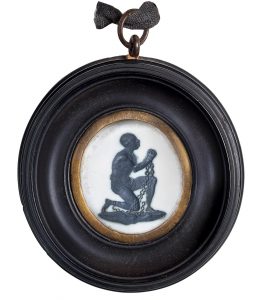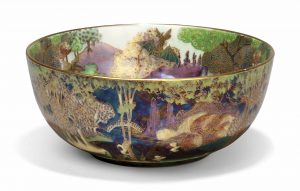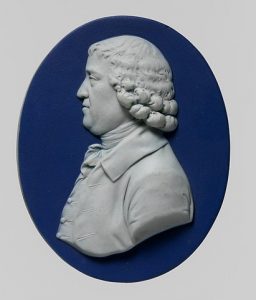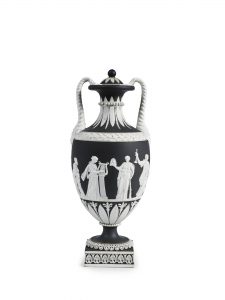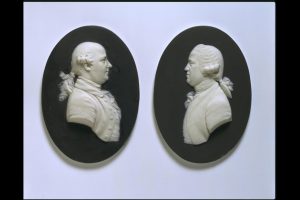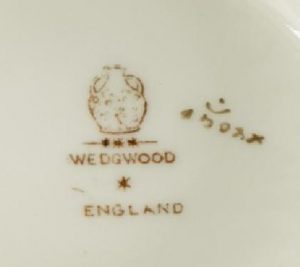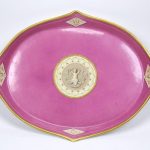Wedgwood was founded on May 1, 1759 by Josiah Wedgwood. Josiah Wedgwood (1730-1795) was one of the most remarkable entrepreneurs and innovators of the 18th century. The foundation of his commercial empire, and of his great reputation as a potter and businessman, was the several ceramic materials and decorative treatments he developed or perfected. The most important of these were Black Basalt, Jasper and ‘Queen’s Ware.’ Prompted by Thomas Bentley, he was swift to exploit the new Neo-classical style, introducing new ceramic materials and products in order to satisfy this shift in taste. His factory at Etruria became one of the industrial marvels of the day. Reference: Victoria and Albert Museum
The Wedgwood family were of long standing potters in the Burslem community long before the birth of Josiah Wedgwood.
Josiah Wedgwood was born in 1730 in Burslem and was the youngest of thirteen children.
Josiah’s father, Thomas Wedgwood died when Josiah was only nine years old. Josiah’s eldest brother, Thomas, succeeded his father as a potter and Josiah became apprentice to him in 1744.
During his apprenticeship, Josiah contracted smallpox which lead to problems with his system and his legs. When he was thirty-four, a bruise lead to the amputation of one of his legs.
After his apprenticeship with his brother ended, Josiah began making knife handles, imitation agate and tortoiseshell small wares at Stoke. It was here that he went into partnership with John Harrison, but the partnership was dissolved two years later.
In 1754, Josiah Wedgwood went into partnership with Thomas Whieldon of Fenton Low who was one of the most eminent potters of his day. They remained together for five years, their principal manufactures being tortoiseshell plates and dishes, cauliflower jugs, teapots with crab-stock handles, agate knife handles and other small wares. During this time, Wedgwood also produced fine green glaze which covered his dessert services in imitations of leaves.
The partnership ended in 1759 and Josiah Wedgwood returned to Burslem where he started business on his own at the “Churchyard” works. It was here that he improved the manufacture of pottery and soon became so successful that he was compelled to enlarge his establishment and took over the “Ivy House” works.
Wedgwood employed the services of his cousin, Thomas Wedgwood and in 1765 they became partners. The first ware which gained him reputation was his fine cream-coloured ware, which remained popular from 1762 until his death. This cream-ware became known as Queen’s ware after it had been approved of by Queen Victoria.
In 1768, Josiah Wedgwood went into partnership with Thomas Bentley. Around the same time, Wedgwood began producing red ware which was formed of the same ochreous clay that had been used by Elers almost a century earlier. Later in 1766 Wedgwood began to make black ware which he called basaltes or black Egyptian.
In 1773 Wedgwood made a fine white terra-cotta suitable for cameos, portraits and bas-reliefs. This was the forerunner of Wedgwood jasper ware of which Wedgwood is still reknown.
Below is a list of some reknown artists who worked for Wedgwood.
| Artist | Works |
| Daisy Makeig-Jones | Fairyland Lustre Ware |
References: Chaffers, “The Keramic Gallery” edited by H M Cundall 1907
